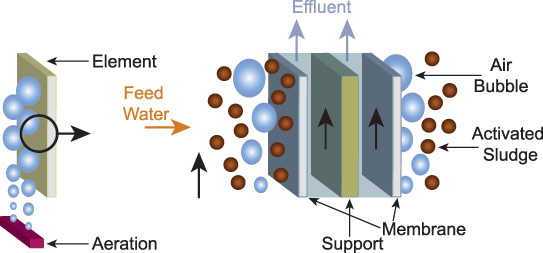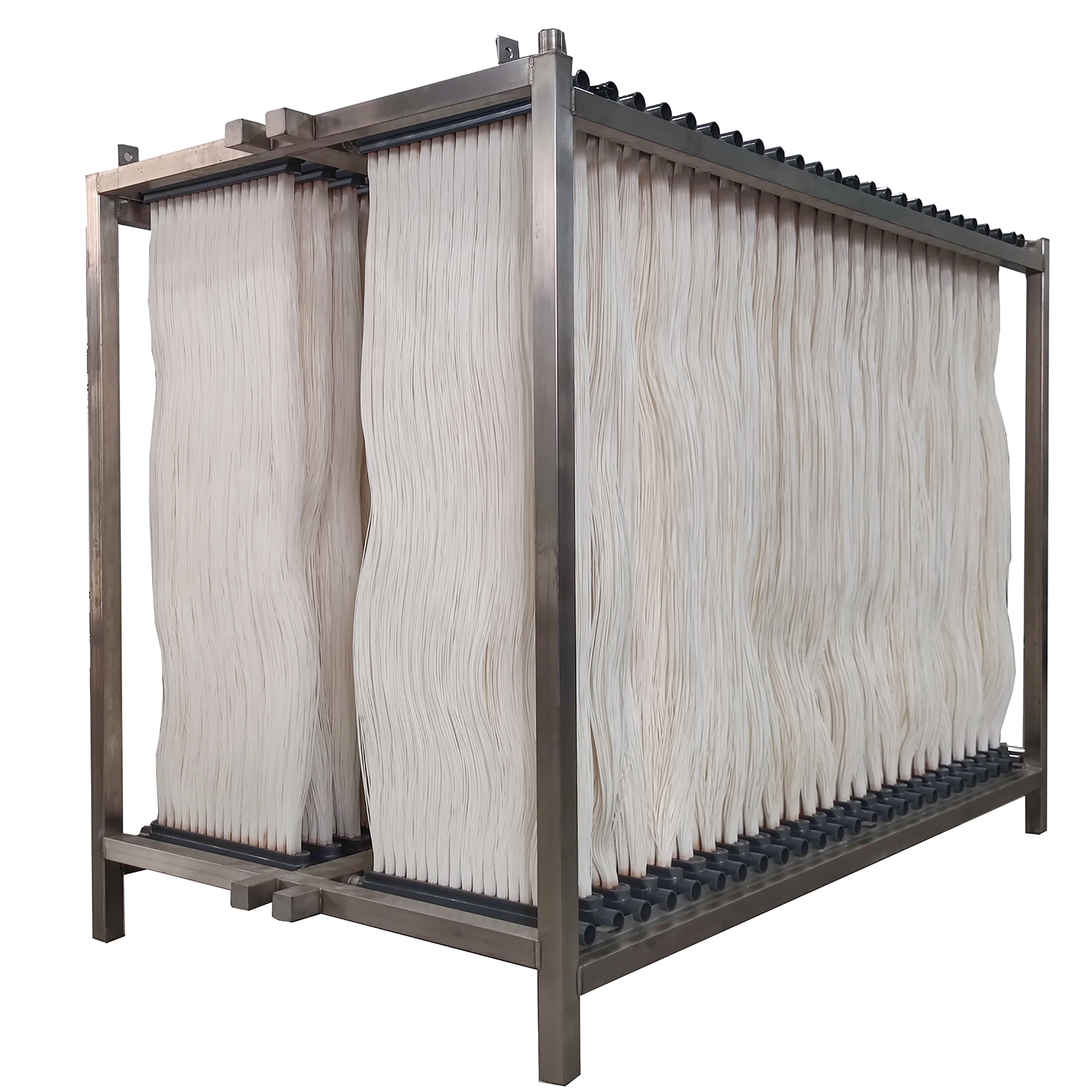Exploring the Benefits of Membrane Bioreactor in Municipal Wastewater Plants
Exploring the Benefits of Membrane Bioreactor in Municipal Wastewater Plants
Blog Article
Exactly How Membrane Bioreactors Are Revolutionizing Water Filtration Solutions
The emergence of membrane bioreactors (MBRs) represents a significant development in the field of water filtration, merging organic treatment processes with sophisticated membrane layer filtering technologies. This assimilation not only boosts the quality of treated effluent but also addresses city room restraints, making MBRs especially ideal for densely populated locations. As worldwide water shortage heightens, the duty of MBRs in facilitating safe and clean water reuse and sustainable water monitoring becomes progressively important. The ramifications of this modern technology extend beyond effectiveness-- what opportunities and obstacles exist in advance for its widespread implementation?
Overview of Membrane Bioreactors
Membrane bioreactors (MBRs) stand for a significant improvement in water filtration modern technology, as they combine organic therapy processes with membrane filtering. This integration improves the performance of wastewater therapy by making use of microorganisms to degrade natural contaminants while all at once using semi-permeable membrane layers to separate treated water from put on hold microorganisms and solids.
The MBR system generally consists of an organic activator where the microbial populace metabolizes impurities, adhered to by a membrane layer purification system that preserves biomass and enables just tidy water to pass through. This double capability leads to higher effluent high quality contrasted to traditional treatment techniques. MBRs can be run in both set and continual circulation settings, using flexibility in style and application.
They additionally enable the recovery of water for reuse, therefore adding to water sustainability initiatives. Overall, MBRs are at the forefront of boosting water treatment efficiency and top quality, showcasing the potential for innovative options in ecological management.
Benefits of MBR Technology
The combination of biological treatment with membrane filtration uses countless benefits for water filtration procedures. Among the primary advantages of Membrane layer Bioreactor (MBR) innovation is its ability to efficiently eliminate both not natural and natural impurities, resulting in premium effluent. The membranes serve as a physical obstacle, avoiding suspended solids and virus from going through, which enhances the total safety and security and integrity of cured water.
In addition, MBR systems need a smaller footprint contrasted to standard therapy methods, permitting more efficient room use. This compact design is specifically beneficial in metropolitan setups where land is limited. MBRs additionally demonstrate functional flexibility, fitting varying influent qualities and flow prices without substantial efficiency degradation.
Moreover, the process supplies improved nutrient removal capabilities, especially for nitrogen and phosphorus, which are critical for stopping eutrophication in receiving waters. The reduced sludge production linked with MBR innovation additionally translates to lower disposal expenses, making it an economical solution in the long run - Membrane Bioreactor. Generally, the benefits of MBR modern technology placement it as a leading option for innovative and sustainable water purification systems, addressing both environmental and financial worries
Applications in Water Filtration
Applications of Membrane Layer Bioreactor (MBR) modern technology in water filtration are impactful and diverse, resolving different treatment needs across multiple markets. MBRs effectively incorporate organic treatment processes with membrane filtering, making them perfect for community wastewater treatment, commercial effluent administration, and even potable water reuse initiatives.
In local setups, MBRs are significantly employed to boost the top quality of treated wastewater, permitting conformity with rigorous discharge policies and promoting the recycling of water for irrigation and non-potable uses. Their small style additionally makes them appropriate for urban settings where area is restricted.
Industrially, MBR technology is utilized to treat procedure water and wastewater, particularly in fields such as food and beverage, drugs, and fabrics. By properly removing contaminants and suspended solids, MBRs aid markets lessen ecological influences while recuperating useful resources from wastewater streams.
Moreover, MBRs are getting traction in decentralized water therapy applications, where small-scale systems can be released in remote locations or creating regions. This adaptability makes it possible for areas to achieve lasting water management options, boosting accessibility to clean water while reducing dependence on conventional therapy approaches.
Study and Success Stories

In one more instance, a fabric manufacturing center in Bangladesh took on MBR innovation to resolve its wastewater obstacles. The system decreased chemical oxygen need (COD) degrees from 1,200 mg/L to much less than 100 mg/L, hence fulfilling regulative standards and significantly reducing environmental effect.
The University of Cape Town's MBR installment has proven efficient in dealing with greywater for non-potable reuse on campus. This job not only preserves drinkable water but additionally serves as an academic model for lasting practices.
Moreover, a fish and shellfish handling plant in Norway utilized MBR innovation to treat effluents having high degrees of natural issue, attaining over 90% toxin removal. These study underscore MBR technology's flexibility and its vital duty in boosting water high quality throughout varied applications.
Future of Water Therapy Solutions
As international water deficiency and pollution challenges escalate, cutting-edge water treatment solutions are ending up being progressively necessary to make sure sustainable accessibility to tidy water. The future of water therapy hinges on the assimilation of advanced innovations that improve the performance look at here and efficiency of purification processes. Membrane bioreactors (MBRs) are at the forefront of this advancement, incorporating biological treatment with membrane layer filtering to generate high-quality effluent suitable for numerous applications.

Arising patterns such as resource recovery from wastewater, consisting of nutrients and energy, will additionally transform therapy facilities into environmentally friendly hubs. Moreover, improvements in nanotechnology and membrane layer materials promise improved performance and long life of filtration systems.

Conclusion
Their function in drinkable water reuse and sustainable water management highlights their relevance in resolving global water shortage obstacles. Proceeded research study and growth will certainly better improve the efficiency and adoption of MBR modern technology, guaranteeing a resilient future for water therapy solutions.
The appearance of membrane bioreactors (MBRs) stands for a considerable advancement in the area of water purification, combining organic treatment procedures with advanced membrane filtering innovations. As global water deficiency escalates, the function of MBRs in helping with drinkable water reuse and lasting water monitoring becomes progressively important. They likewise allow the recovery of water for reuse, hence contributing to water sustainability initiatives.As worldwide water scarcity and pollution obstacles escalate, innovative water treatment remedies are becoming increasingly essential to guarantee lasting accessibility to clean water. Their role in potable water visit the website reuse and lasting official site water administration highlights their importance in attending to worldwide water shortage challenges.
Report this page